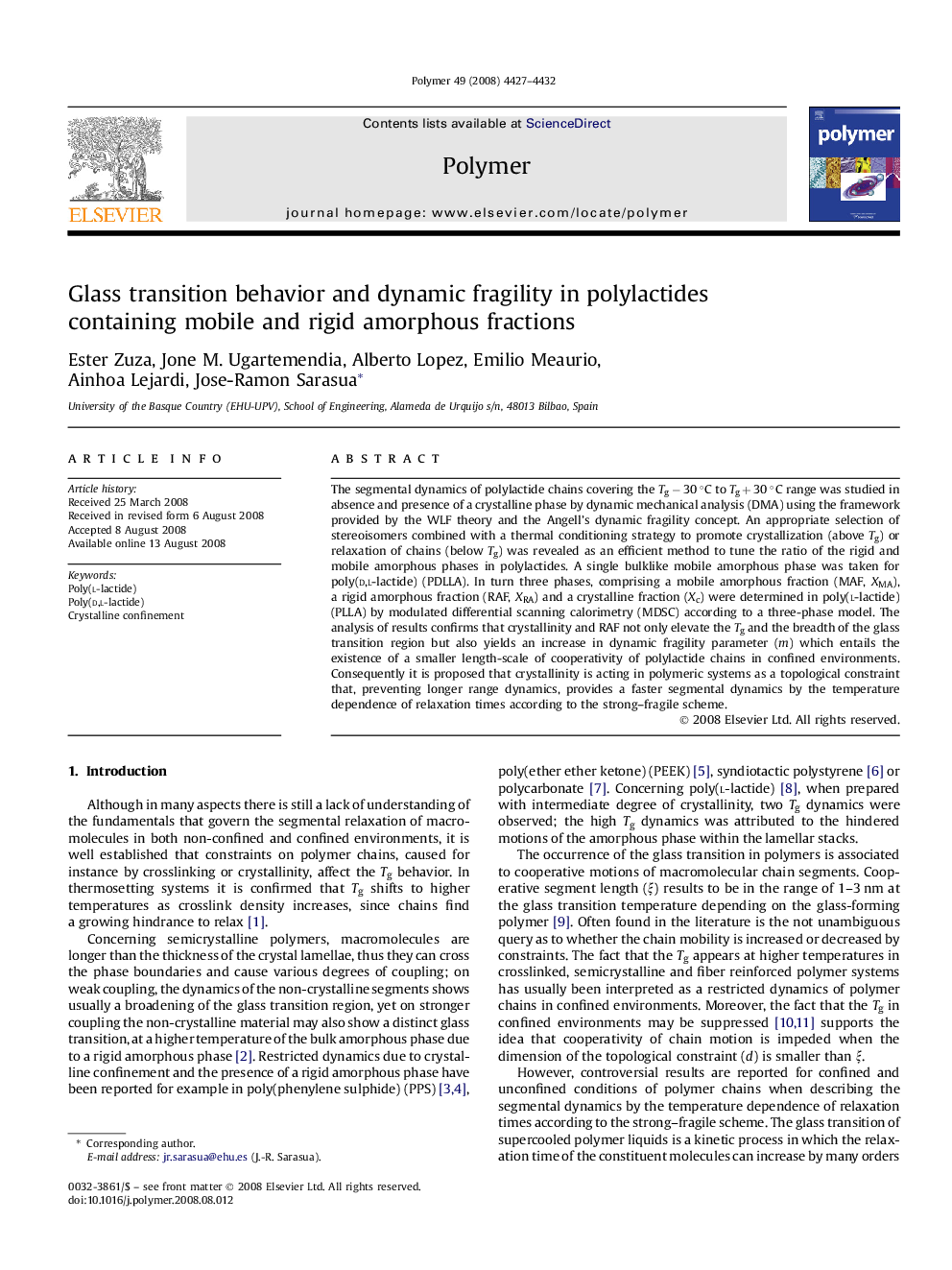| Article ID | Journal | Published Year | Pages | File Type |
|---|---|---|---|---|
| 5188724 | Polymer | 2008 | 6 Pages |
Abstract
The segmental dynamics of polylactide chains covering the Tg â 30 °C to Tg + 30 °C range was studied in absence and presence of a crystalline phase by dynamic mechanical analysis (DMA) using the framework provided by the WLF theory and the Angell's dynamic fragility concept. An appropriate selection of stereoisomers combined with a thermal conditioning strategy to promote crystallization (above Tg) or relaxation of chains (below Tg) was revealed as an efficient method to tune the ratio of the rigid and mobile amorphous phases in polylactides. A single bulklike mobile amorphous phase was taken for poly(d,l-lactide) (PDLLA). In turn three phases, comprising a mobile amorphous fraction (MAF, XMA), a rigid amorphous fraction (RAF, XRA) and a crystalline fraction (Xc) were determined in poly(l-lactide) (PLLA) by modulated differential scanning calorimetry (MDSC) according to a three-phase model. The analysis of results confirms that crystallinity and RAF not only elevate the Tg and the breadth of the glass transition region but also yields an increase in dynamic fragility parameter (m) which entails the existence of a smaller length-scale of cooperativity of polylactide chains in confined environments. Consequently it is proposed that crystallinity is acting in polymeric systems as a topological constraint that, preventing longer range dynamics, provides a faster segmental dynamics by the temperature dependence of relaxation times according to the strong-fragile scheme.
Keywords
Related Topics
Physical Sciences and Engineering
Chemistry
Organic Chemistry
Authors
Ester Zuza, Jone M. Ugartemendia, Alberto Lopez, Emilio Meaurio, Ainhoa Lejardi, Jose-Ramon Sarasua,
